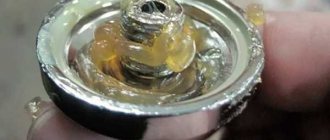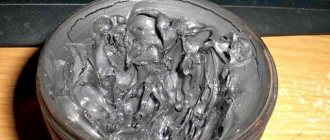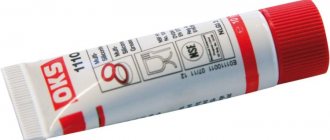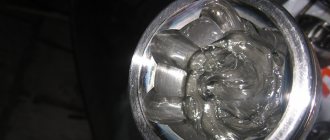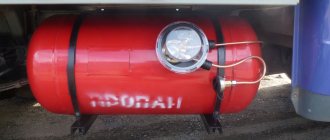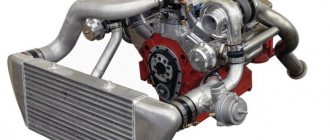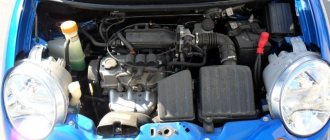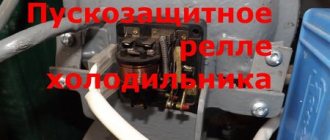What is Litol?
Litol is the most famous universal grease based on a lithium thickener in Russia and the CIS countries.
Appearance and color
Lithium soap lubricants come in different colors. This parameter depends on the additives and dyes introduced by the manufacturer. Car owners mention white and burgundy (cherry), blue and green Litol. However, according to the standard, the spectrum of its shades is amber: it starts with light yellow and ends with brown.
An uncharacteristic color should alert you: either this is not Litol, or its composition does not meet the standards.
In the USSR, the lubricant was transparent. Changing and adding components affects this characteristic - the material becomes cloudy. The transparency of modern Litol may vary between different manufacturers, but does not affect the properties of the product.
Consistency
Lubricants of the lithol family are homogeneous and dense.
Consistency according to ISO 2137 – semi-solid.
The contents of the package resemble a thick ointment and look like Vaseline or boiled condensed milk. The original Litol's viscosity characteristics tend to be NLGI class 3.
Lubricant composition
- Litol is based on a mixture of mineral oils with a viscosity value of 60-75 mm2/s (at 50°C).
- the base is thickened with lithium hydroxide with hydroxystearic acid or its glyceride. The average thickener share is 10-13%.
- The classic composition also includes the antioxidant diphenylamine (0.5%) or neozone-D (0.7%) and a viscosity additive - polyisobutylene P-20 (4%).
Standards and GOSTs
The manufacturing technology, composition and properties of lithium lubricants are regulated by state standards or technical specifications: for example, Litol 24 - GOST 21150-87 (reissued as GOST 21150-2017 ). The same standard describes the modification of Litol-24RK, intended for the preservation of friction units.
Specifications
- NLGI – 3;
- DIN 51 502 – K3K-40.
Tolerances
- MVK Gosstandart of the Russian Federation No. 814/422;
- OEM approval FIAT-VAZ 55588.
Basic properties
The lubricant does not contain water and exhibits excellent moisture-resistant and anti-corrosion properties.
Lithol is characterized by increased resistance to shear, chemical attack and temperature changes. It is a dielectric.
Performance characteristics are maintained at temperatures from -40°C to +120°C, and for a short time at +130°C. At frosts of -30°C and below, Litol can thicken, but heating the units treated with it during operation restores its properties. The density of the material remains unchanged when heated.
The material is flammable! Flashes in a closed crucible at 183°C, in an open crucible – at 199°C. Temperature limits of ignition from 250°C to 364°C.
Lubricant specifications
The basic parameters of Litol according to GOST are presented in the table.
| Name | Meaning |
| Colloidal stability (% oil released), max | 12% |
| Volatility (t 120°C), max | 6% |
| Dropping temperature, min | 185°C |
| Density (at 15°C) | 892 g/cm3 |
| Penetration number (t 25°C) | 220-260 |
| Dynamic viscosity (t-20/0/50°С at an average strain rate gradient of 10/10/100 s-1) | 650/280/8 Pa s |
| Tensile strength (t 20/80°С) | 500-1000/>200 Pa |
| Mass fraction of free alkali in terms of NaOH, max | 0,1% |
| Mass fraction of mechanical impurities, max | 0,05% |
| Welding load Рс, N(kgf) | 1410 (141) |
| Critical load Pk, N(kgf) | 630 (63) |
| Bully index | 28 |
| Change in rubber volume/hardness (grade 26-44),% | ±8 |
Parameter values for different manufacturers' products may vary.
Solidol and Litol. What's better?
Comparative test tests show that the difference in the chemical basis of solid oil and lithol depends decisively on the chemical composition. In particular, replacing calcium salts with lithium salts:
- Reduces the cost of manufacturing products.
- Reduces the frost resistance of the lubricant.
- Negatively affects the load capacity of protected equipment elements.
- Shifts the boundary of scuffing towards lower operating temperatures.
It is worth noting that in terms of its chemical resistance, solid oil is noticeably inferior to lithol, which predetermines the need for its more frequent replacement.
Taking into account these conclusions, we can conclude: if the operation of the friction unit is not accompanied by high temperatures and loads, and the higher cost of lubricant is critical for the user, then preference should be given to solid oil. In other situations, it is more advisable to use lithol.
Classification of Lithols
The lithol family is represented by several popular brands CIATIM and Litol 24. All lubricants are three-component (base, thickener, filler), multi-purpose.
CIATIM-201
The simplest frost-resistant lubricant based on mineral oil with lithium stearate and an antioxidant additive. Developed for widespread use. Standard GOST 6267-74.
CIATIM-202
All-season lubricant based on transformer and aviation oil with lithium soap of higher fatty acids and antioxidant. Similar in composition to Tsiatim-201. In most cases, these lubricants are interchangeable. Standard GOST 11110-75.
CIATIM-203
Frost-resistant lubricant based on transformer or spindle oil with lithium soap, extreme pressure and viscosity additives. It is superior in quality to those mentioned. Standard GOST 8773-73.
Litol-24
All-season universal lubricant based on mineral oils with a possible admixture of synthetics, thickened with lithium soap, with a viscosity additive and an antioxidant. Can replace all of the above. Standard GOST 21150-87 (21150-2017).
What is their difference
Despite the similar composition of lithol lubricants, their varieties have significant differences in performance characteristics:
| Brand | Temperature range | Mechanical stability | Colloidal stability | Tensile strength | Other Features |
| CIATIM-201 | from -60°С to +90°С | Low | Low | Short | Frost resistance, hygroscopicity, incompatibility with plastics and rubber |
| CIATIM-202 | from -50°С to +120°С | Low | Average | Short | Frost resistance, water resistance, hygroscopicity |
| CIATIM-203 | from -50°С to +90°С | Average | High | Short | Frost resistance, hygroscopicity, water resistance, extreme pressure properties |
| LITOL-24 | from -40°С to +120°С | High | High | High | Heat stability, hygroscopicity, water resistance, anti-friction and anti-corrosion properties |
CIATIM brand products are designed for harsh weather conditions or winter use. Only CIATIM-202 lubricant can be called all-season, but in terms of mechanical and colloidal stability it is significantly inferior to LITOL 24.
Classification of solid oils
Solid oil, like lithols, is based on petroleum oils, but the thickener in this material is calcium soaps based on higher acids. The functional suitability temperature of solid oil is limited to -30 °C… +75 °C. Depending on the acids used for thickening, there are two types of solid oils:
- Fat solids
- Synthetic solid oils
Fatty greases use fatty acids of natural origin. Synthetic solid oils contain synthetic acids. They are cheaper than fat analogues and are approximately comparable in quality. Two main brands of synthetic solid oils are produced: US-1 and US-2. During operation, it is allowed to mix different types of solid oils, which will not affect the properties of the overall mixture.
The advantage of solid oil is that during operation it is not washed out from the places where it is placed. Due to their high fat content and low operating temperature, solid oils are used in units and mechanisms operating in humid conditions in unheated areas (low-speed gearboxes, agricultural machinery). The negative properties of this lubricant include low mechanical stability and viscosity, inversely proportional to temperature, and a tensile strength of less than 600 Pa.
Scope of application Litol-24
The main purpose of Litol is to lubricate surfaces and friction units with low and medium loads, as well as with increased loads at low speeds: pulling cables, hinges, bearings, shafts, axles, splined joints, hubs, calipers, hinges.
Features of application
There are several important limitations in operating the product:
- Cannot be used to lubricate CV joints.
- Do not mix with silicone lubricants and calcium thickener formulations.
There is a widespread belief that Litol is incompatible with aluminum and its alloys, especially in a humid environment. There are no official warnings about this, and domestic experiments do not confirm the destructive effects.
Where is Litol used?
Litol is widely used in the maintenance of cars and trucks, tracked vehicles, specialized agricultural, road and other transport equipment. Parts to be processed with this fuel and lubricant:
- sliding bearings of different types;
- closed and open rolling bearings of the chassis, transmission, suspension and attachments (hubs, supports, steering knuckles, axle shafts, gear and other transmissions, rear-wheel drive universal joints, couplings, pumps, generators, etc.);
- threaded and swivel connections;
- guides (window lifters, sunroof, etc.);
- lightly loaded actuators;
- cables, rods, etc.;
- electrical blocks and connectors, battery terminals;
- door and lid hinges.
Where else can it be used?
In addition to the automotive industry, Litol 24 is used in the repair and maintenance of railway and air transport, ships, industrial special equipment, industrial machines and mechanisms, and electrical equipment. On thematic forums there are references to the use of lubricant for household needs (lubricant for door and furniture hinges, power tools).
What is the consumption of Litol?
According to the manual of the Ministry of Transport of Russia, the standard consumption of grease for passenger cars is 0.1 kg for every 100 liters of fuel.
Until the early 90s, more detailed recommendations for domestic cars were indicated in chemotological maps. For example, 65 g of Litol is placed in the front wheel bearing of a VAZ-2105, 15 g in the steering rod joints, etc. Nowadays, manufacturing plants are not required to draw up such maps, and often there is no information on fuel consumption.
A car that comes off the assembly line runs on factory lubricants for up to 30-40 thousand km; for further operation it is recommended to replace them completely or replenish the used volume.
How much Litol to put in the bearings can be calculated independently using the formula:
V = D * B * 0.5
where V is the volume of lubricant (ml), D and B are the outer diameter and height (width) of the bearing (cm), respectively.
Or roughly calculate using the table:
| Marking | Speed value (by bearing type) | Lubricant filling volume | ||
| Ball | Needle, spherical, conical roller, radial | Roller | ||
| VL (very low) | < 30 000 | < 30 000 | 90% | |
| L (low) | < 100 000 | < 75 000 | < 75 000 | 75% |
| M (medium) | < 300 000 | < 210 000 | < 270 000 | 50% |
| H (high) | < 500 000 | ≥ 210 000 | ≥ 270 000 | 30% |
| VH (very high) | < 700 000 | 20% | ||
| EN (extreme high) | ≥ 700 000 | 15% | ||
In general, car owners and mechanics on forums and review sites note the economical consumption of Litol 24 lubricant.
LITOL
Appeared much later than its famous brother, it was supposed to replace outdated lubricant! Developed in the 70-80s of the last century. According to physical characteristics, it should be exactly the same, that is, plastic and thick (not flowing), but must withstand high temperatures.
Here they also use “petroleum oil”, only the density here is different, if almost everything possible went to SOLIDOL, then to LITOL they take a certain density of 60-80 g/m3, and now lithium soap is added. What I would like to note is that aggressive compounds aimed at “corroding” silicone anthers were removed, and anti-corrosion compounds were also added to better protect metal surfaces. At the moment, GOST according to which LITOL is produced dated 1987.
As it becomes clear, this lubricant has many advantages, perhaps the most important is that it easily maintains a temperature of 120-125 degrees and does not collapse. What makes it so is its use in many areas of the automotive industry, starting from hinges (they fill the boots of steering wheels and ball joints, as well as CV joints ), ending with lubricant for bearings. It is worth noting that it works down to extremely subzero temperatures of -40, -45 degrees Celsius.
It is resistant to the aquatic environment and is practically not washed out by water! Which makes it a universal remedy in places with a lot of moisture.
If you look at the cons, you will notice that there are few of them! I would even say just one, it is active in contact with aluminum! Therefore, it is NOT RECOMMENDED to use aluminum compounds for lubrication, it will simply corrode them.
Advantages and disadvantages
Disputes about the qualities of Litol and the possibility of its use in modern cars are built around the advantages and disadvantages of lubricants made according to the recipe of the last century.
pros
Among the advantages of Litol-24 lubricant are technical characteristics:
- excellent adhesion;
- stability in the most important parameters;
- heat and water resistance;
- zero electrical conductivity.
The low cost and long shelf life were also praised by car owners.
Minuses
- flammability;
- low resistance to welding loads;
- poor heat dissipation;
- absence of anti-wear additives (according to GOST).
Also, the stickiness of the thick composition is justifiably considered a negative factor, due to which dust, including abrasive, accumulates in it.
Separately, it is worth mentioning that the production of Litol 24 today is not necessarily regulated by state standards. Many manufacturers do not comply with GOST, replacing it with TU. This causes conflicting responses.
On the one hand, lubrication can be improved with the help of additives: this is how Litol-24M is produced with a friction modifier (TU 0254-015-00148820-99). On the other hand, the buyer risks purchasing a low-quality product from unknown raw materials.
What is better to choose?
Actually, the compositions are very similar to each other, but SOLIDOL is still an outdated composition that will sooner or later leave the market. Now I would like to summarize briefly, in which I will list several points for LITOL, so:
- Where is this lubricant most often used? Everything is correct for “stuffing” the boots of ball and steering ends. They do not heat up much during operation, a maximum of 50-55 degrees Celsius (that is, both compositions seem to be suitable). However, anthers are often made using new technologies, adding silicone and plastic. SOLIDOL will corrode the whole thing, thereby reducing the service life of the tips.
- Further, where else this thick composition is used, for “stuffing” CV joint boots, we again use LITOL because it does not corrode rubber and silicone materials at all.
- Wheel bearings. Grease is also used here, but the use of SOLIDOL is not possible here for two reasons. These are high temperatures (the hub can often heat up over 100 degrees Celsius), and mechanical loads (LITOL is more resistant to them).
- Steering rack. Well, the last one is the use in a rack, without power steering. Here you need to lubricate the meshing area of the gear and shaft. Here, again, there are no high temperatures, but there are rubber (silicone) boots, as well as plastic guide bushings. To prevent them from “corroding”, you need to use a newer composition
Actually, that’s all, as you can see, there is not even a question of what is better to use, there is a newer and more advanced type of lubricant and this is definitely LITOL, this is what you need to use in your car, and the difference in price between the old and new substance is not so big .
That's all, I think it was useful, read our AUTOBLOG, subscribe to updates.
( 21 votes, average: 4.62 out of 5)
During vehicle maintenance, a special lubricant may be required. A mechanic always has solid oil or lithol at his disposal, and an experienced specialist can easily explain which of these substances is better. But what to do as a novice car enthusiast, and what composition to recommend for purchase.
Previously, I didn’t even understand the difference between lithol and solid oil. Moreover, I thought that grease was just an old name that had gone out of fashion, and now the oily lubricant is called lithol. Now I remember with a laugh my thoughts at that time, and so I decided to write an article of advice. Here I will talk about the difference between lithol and grease, for what purposes each composition is better suited, and whether the products differ in cost.
Why is Litol-24 lubricant popular among drivers?
Despite the contradictions, Litol-24 is one of the most famous and popular universal greases of domestic production. Its long history has made it recognizable. The habit of using this particular lubricant, and often its reserves, was passed on from the older generation to the younger.
Litol is in constant demand among drivers as a reliable, cheap and easy-to-use product. It is put into mechanisms according to the “put it and forget it” principle; its performance properties allow it to solve most daily problems, and when the car is idle, the composition protects friction units from corrosion.
SOLIDOL
Let's start with this substance, let's just say - this is one of the first greases, and as it becomes clear, it is morally obsolete. It was used back in the late 20s of the last century. If we take the production method, it is quite simple - they take the remains of petroleum fractions (which are left over from the production of gasoline), they can also be called “petroleum oil” and add calcium soap to it. The composition turns out to be very thick and very plastic, but not runny!
Ideal for applying lubricant to various components so that it does not drain. This is how solid oil is obtained; it is it that perfectly lubricates hinges and other components that are outside the “oil baths”. It was used very often on outdated equipment, both agricultural and motor vehicles. BUT the technology is changing, the speeds are growing, the load is growing, and so are the temperatures.
Therefore, the use of this composition on modern machines is not recommended! Why? YES, everything is simple, already at a temperature of 80-85 degrees Celsius, this composition becomes liquid, loses its properties, and simply collapses.
Another disadvantage is that it can chemically “conflict” with some types of silicone materials. These can be all kinds of oil seals and anthers , it will simply destroy them faster, which for a car suspension means quick failure. Therefore, for modern cars, a different composition is needed and in reality it exists
Release forms and articles
Most manufacturers have an article number for each release form of Litol-24, but some brands do not use or do not publish special designations. Sellers can also assign their own codes - in this case, the store catalog number and the manufacturer’s number will not match.
They produce lubricant in small and large packaging: tubes from 100 g, plastic and cardboard tubes of 400 g, polymer and metal buckets and cans from 800 g to 10 kg, steel drums, cans and barrels from 17.5 to 180 kg.
Litol-24 marking (article and weight) from some manufacturers:
| Manufacturer | vendor code | Weight | Tara |
| Gazpromneft | 2389906978 | 100 g | Tube |
| 2389907079 | 150 g | Doypack | |
| 2389901373 | Tube | ||
| 2389907073 | 300 g | Doypack | |
| 2389901374 | 350 g | Tube | |
| 2389906872 | 400 g | Cartridge (tube) | |
| 2389906898 | 4 kg | Metal bucket | |
| 2389906897 | 8 kg | Metal bucket | |
| 2389904078 | 18 kg | Metal bucket | |
| 2389901377 | 45 kg | Barrel polymer | |
| 2389901378 | 170 kg | Metal barrel | |
| Lukoil | 1469696 | 5.6 l | Plastic bucket |
| 1470311 | 10.7 l | Plastic bucket | |
| 1500183 | 20 l | Polymer canister | |
| 1648260 | 210 l | Metal barrel | |
| NZSM | 1831 | 400 g | Cartridge (tube) |
| 751 | 4 kg | Plastic bucket | |
| 752 | 9 kg | Plastic bucket | |
| 542 | 18 kg | Drum steel | |
| LuxeOil | 314-411 | 100 g | Tube |
| 321-888 | 160 g | Tube | |
| 314-506 | 250 g | Tube | |
| 320-053 | 360 g | Tube | |
| 315-676 | 400 g | Cartridge (tube) | |
| 315-737 | Metal can | ||
| 315-736 | 800 g | Metal can | |
| 186-004 | 850 g | Polymer jar | |
| 186-002 | 2 kg | Polymer jar | |
| 316-267 | 9.5 kg | Barrel polymer | |
| 315-735 | 17.5 kg | Metal bucket | |
| 186-009 | 21 kg | Metal can | |
| 186-008 | 37 kg | Barrel polymer | |
| OILRIGHT | 313-794 | 100 g | Tube |
| 320-358 | 160 g | Tube | |
| 187-011 | 800 g | Plastic jar | |
| 187-012 | 2 kg | Plastic jar | |
| 187-031 | 5 kg | Plastic jar | |
| 187-032 | 9.5 kg | Metal can | |
| 320-123 | 21 kg | Barrel polymer | |
| Sintec | 663322 | 250 g | Tube |
| 800401 | 800 g | Metal can | |
| 81827 | 2.5 kg | Plastic jar | |
| 99000 | 9.5 kg | Plastic bucket | |
| 90053 | 18 kg | Plastic bucket |
Features of the use of solid oil in the treatment of psoriasis
The characteristics and use of solidol were compiled based on reviews of patients using the drug as a treatment for psoriasis. This helped to derive a number of rules that help to use solid oil correctly. By following them, you can achieve better treatment and stable remission, despite the fact that doing this is not at all difficult:
- The medicine should remain on the skin for at least 10 hours, so it is better to do this immediately before bed, tying cling film over the ointment. It will prevent the product from wiping off on the laundry, which can then be difficult to wash.
- To achieve a positive therapeutic effect, the procedure is performed every day. Before using the drug, you should cleanse the body using sodium thiosulfate. During therapy, it is necessary to adhere to proper nutrition and stop drinking alcohol and smoking.
- After the time the substance remains on the skin has passed, it will need to be washed off with plenty of water and soap. After hygiene procedures, you can moisturize your skin with a regular nourishing cream. The patient will be able to see improvements by the end of the first week of therapy. The full course is at least 45 days, after which not only the signs of the disease disappear, but also a long-term remission occurs.
- The minimum course of treatment must be completed within 14 days. It is prohibited to interrupt it earlier if there are no indications for this.
Important! Solidol, intended as a lubricant for vehicles, should not be used to treat psoriasis. This lubricant contains a large number of harmful impurities that are dangerous to humans.
After applying such a product to damaged skin, harmful substances can penetrate into the blood and cause various extremely unpleasant consequences.
Storage periods and methods
The shelf life of Litol-24 is one of its strengths. The guaranteed shelf life is 5 years, but is virtually unlimited under appropriate conditions.
The room where the lubricant is stored must be cool and dry, well ventilated, away from sources of open flame and protected from precipitation. It is preferable to leave fuels and lubricants in the original container, but if necessary, they can be transferred to a glass or polymer container with a tight lid.
Litol-24 should not be kept near acids, compressed and liquefied gases, including oxygen and other oxidants, as well as explosive and flammable substances.
Temperature conditions from -40˚С to +40˚С are suitable for transportation.
How to remove grease from pots. How to clean a pot from grease.
Both of these lubricants are very popular in automotive circles. Wherever they are used, from the lubrication of ball and steering ends, to all kinds of bearings and hinges. But many of us think that this is the same lubricant, that they do not differ at all, and there is no difference! However, this is fundamentally wrong; there are differences, and they are quite critical! Therefore, if you are wondering what to choose, this article is for you...
No, guys, it's not the same thing! Yes, the names are consonant, but there is a big difference between them and, as it becomes clear, it lies in the chemical formula. These differences make these substances for different types of applications, and this is really worth knowing so as not to harm your “iron horse”. Let's look at what in more detail
Precautionary measures
Litol-24 belongs to class 4 according to GOST 12.1.007 - it is low-hazard and does not emit toxic substances. Moreover, the composition is flammable. When working with it, you must comply with a number of safety requirements and precautions:
- In working and storage areas, ensure good ventilation (supply and exhaust), avoid handling open flames, smoking, and ground equipment.
- Prevent lubricant from entering the domestic sewer system, storm drains, or open water bodies.
- When working with the product, use PPE (mask, gloves) and follow the rules of hygiene: wash your hands with soap and water after contact with the lubricant; in case of contact with the mucous membrane (including the eyes), wash with warm water and soap.
- In case of fire, extinguish with foam based on PO-1D, PO-ZA, sprayed with water.
What is better to choose: litol or solid oil?
Without a doubt, litol is a more reliable and modern material for lubricating individual parts and has many advantages over solid oil.
This is the reason why many mechanics prefer this product. Moreover, sometimes the unit components are significantly overloaded and can become seriously hot. In such a situation, it is strictly forbidden to use solid oil. On the other hand, solid oil is suitable for use in units where the risk of leaching is high.
Analogues and competitors
In terms of technical characteristics and application, Litol-24 has a number of analogues and competitors that position themselves as more acceptable or qualitatively superior. Among them, we can consider fuels and lubricants of domestic and foreign production.
| Name | Description | |
| Russian | ||
| Solid oil | Consistency class according to NLGI: 2. Based on calcium soap. Temperature range from -30°С to +65°С. Corrodes rubber and plastics | |
| Fiol-1 | NLGI consistency class: 1. Grease with lithium soap and additives. Less viscous, less stable, more frost-resistant than Litol-24. Temperature range from -40°С to +120°С | |
| Fiol-2 | NLGI consistency class: 2. Mineral base with lithium soap. Operable from -40°C to +100°C. Less thick, less stable than Litol | |
| Fiol-3 | NLGI consistency class: 3. Mineral base with lithium soap. Most similar to Litol-24, mixes with it | |
| Imported | ||
| Castrol | LM, LMX | Consistency class according to NLGI: 2. Temperature range from -35°C to +140°C (LM) and up to 170°C (LMX). Pressure resistance, anti-corrosion and extreme pressure properties |
| Mobile | MOBILUX EP2, EP3 | Consistency class according to NLGI: 2, 3. Composition performance from -20°C to +130°C. Resistance to shock loads and vibration, anti-corrosion properties, extreme pressure properties (EP additives) |
| Shell | Alvania RL (Gadus S2 V100) 2, 3 | Consistency class according to NLGI: 2, 3. Temperature range from -20°C to +130°C. Vibration resistance, anti-scuff properties, incompatible with rubber parts |
| Alvania EP(LF) , Retinax EP (Gadus S2 V220) 2, 3 | ||
| ESSO | BEACON 3 | Consistency class according to NLGI: 3. Operation at temperatures from -30°C to +140°C. Vibration resistance |
| Texaco | HYTEX EP-2 | NLGI consistency class: 2.5 (2/3). Temperature range from -20°C to +130°C. Extreme pressure properties |
Despite the improved anti-wear characteristics, many of the proposed substitutes are inferior to Litol-24 in terms of thermal stability.
Aerosol lithium greases
Plastic lubricants in aerosol form deserve special attention. Spray lubricants with lithium are produced by foreign and domestic brands: MANNOL, Xado, RUNWAY, Hi-Gear, Texon, ABRO, Fenom, KERRY, ASTROhim, Arsenal, etc. Due to their high penetrating ability, many of them are intended mainly for processing threaded connections, cables and guides, but some are also suitable for loaded components.
WD-40 SPECIALIST
White lithium grease from the well-known manufacturer WD-40 is one of the best aerosol fuels and lubricants. It is used to reduce friction in mechanisms operating under excessive load in the range from -18°C to +140°C. Protects against corrosion.
What is litol - types of lubricant and features of use
I was not mistaken in considering litol a modern product. This is indeed true. The product was developed and released for sale back in the 80s of the last century. Formally, the composition was supposed to replace solid oil completely, but over time, however, the desired result could not be achieved.
The lubricant is based on oils contained in petroleum products. The oil base thickens during the manufacture of the composition. In the future, this approach allows the finished product to achieve a high thermal threshold during operation. Depending on the brand of lithol we are talking about, the color of the product can range from very dark to light. Today the following names are found in the Russian Federation:
The last two types of lubricant were developed specifically to lubricate machine components that are constantly under heavy load. Basically, the products are used in technical areas and the most important parameter of such compositions is the significant operating temperature (from -50 to +100 degrees C).
The oils are similar and quite interchangeable in practice. Additionally, it is worth noting that litol perfectly repels aqueous environments, provides excellent lubrication and provides complete protection of parts from wear. Litol -24 is considered the most advanced today, since the lubricant can withstand temperatures up to +130 degrees C.
